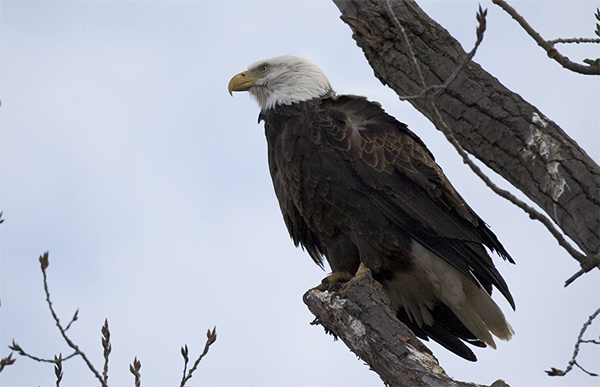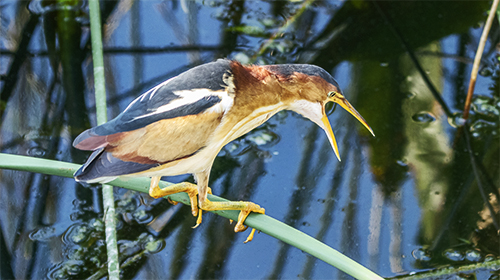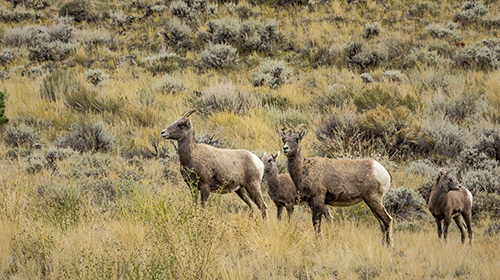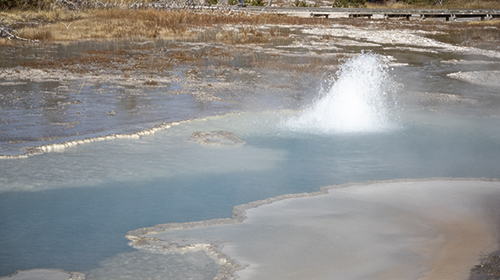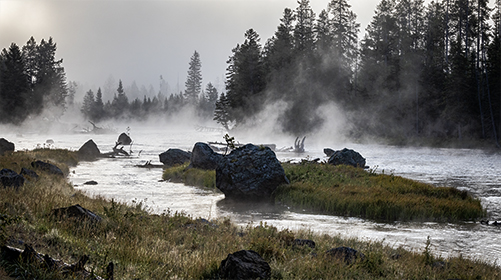America's National Emblem the Bald Eagle
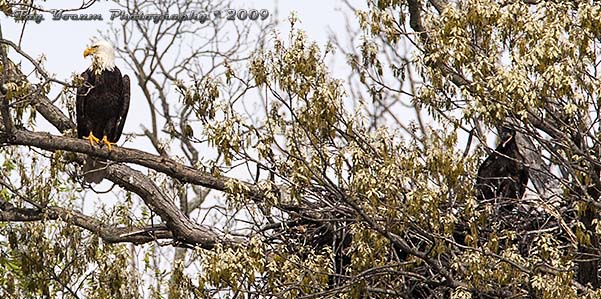
The adult bald eagle, pictured on the left in the above picture, stood guard over a nest of older eaglets almost ready to fledge. As the current year's eaglets get older, one parent will stay in the general area of the nest but move further away with time.
The American Bald Eagle is America's national emblem, protected by law. Because of DDT usage in the 50s and 60s, the number of nesting pairs dropped almost to less than 450. Once the use of DDT was stopped and the birds were protected by law, there are, as of 2020, 71,400 nesting pairs. What a success story! A new danger has arisen. The large wind turbines are now killing Bald and Golden eagles that get to near them and get sucked into the blades.
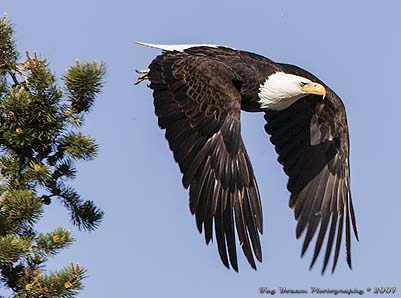
The Bald Eagle's distinctive white head, neck, and tail make it easy to spot. It has a brown chest. Bald Eagles have been confused with ospreys. The osprey has a white head with a strip of brown in it but a white chest and brown tail.
The male eagle is slightly smaller in height, wingspan, and weight than the female. This differs from most birds, where the males are usually bigger and prettier.
Juvenile bald eagles have a mixture of brown and white with a black beak. They do not get white feathers until they are about five.
This eaglet was seen in the Woodstown, New Jersey, area.
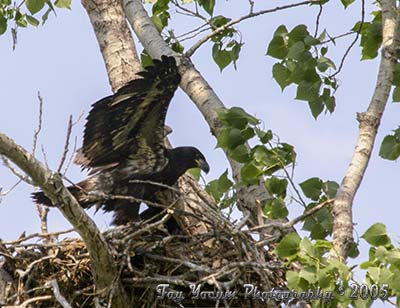
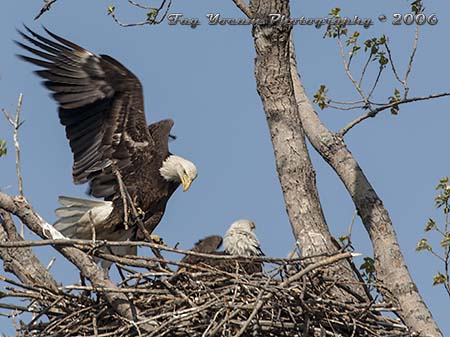
The parents mate for life and are both involved with raising the young. Here, one parent brings nesting material to prepare for the hatching of the young.
Bald Eagles mate for life. As they start nesting, they usually build two or three nests. One is their primary nest, and the others are called alternates. If something happened to the original nest, they would move to a second location. Nests are built in the tallest trees that are close to water since their main food is fish. They will eat carrion.
It can take one to three months to build a nest. The female brings in material and arranges the sticks. They may alternate between the various nests that they have built or reuse the same nest over and over. They refresh the nest when reused, growing the nest into an impressive structure.
Guinness World Records lists the 1963 St. Petersburg, Fl. Nest is the largest bird nest in the world. It was created by a pair of Bald Eagles and measured 9 feet 6 inches (2.9 m) wide and 20 feet (6 m) deep. It was estimated to weigh 4,409 pounds (two tons).
Bald Eagles feed mainly on fish, but I have seen one carry home a snake. Because of their diet, they live along the coast and on major lakes and rivers. This picture was taken just to the east of the Mississippi River. One winter, I saw at least 60+ eagles, the best I could count, along the river just south of the Clark Bridge in Alton, IL.
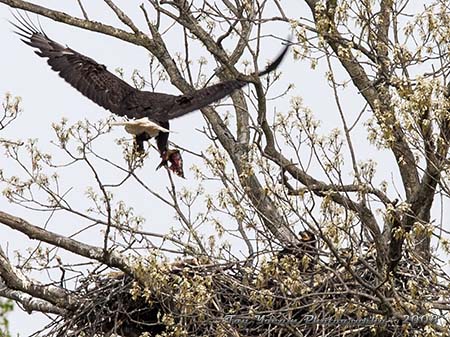
Bald Eagles can fly at 10,000 feet (15093 kilometers) and achieve speeds of about 30 - 36 miles per hour (48 - 58 kilometer per hour) in level flight. They can see fish from several hundred feet in the air, and they see in color. While their eyes are almost the same size as a human's, they are four times as sharp.
Eagles also hunt from tall trees. When catching a fish, the eagle swoops down and grabs it with its very sharp and strong talons, often just getting a few tail feathers wet.
Ospreys, on the other hand, will hover over a spot where they think they see a fish and then plunge into the water, getting their whole bodies wet.
Eagles weigh about 10.5 pounds (4.76 kilogram) and can stand 34-43 inches (86 to 109 centimeters) tall.
